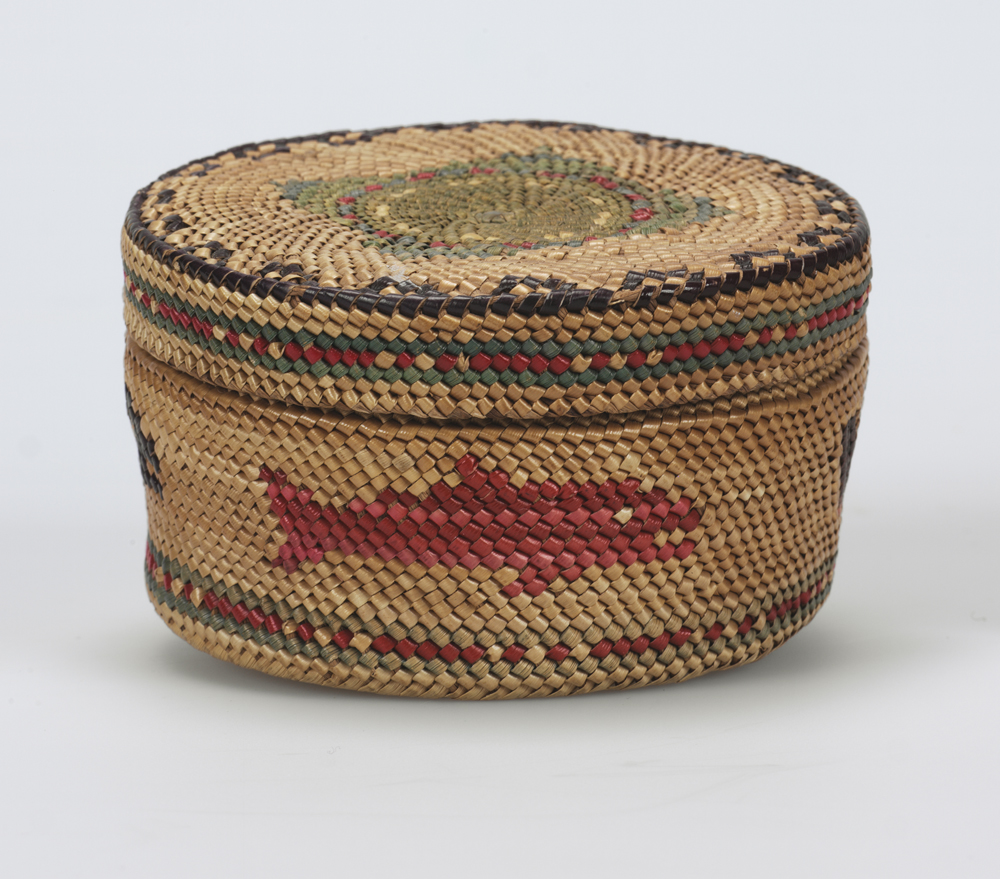
Makah Basket
Makah
Polychrome lidded basket with whaling scene
Early 20th century
1 x 3
Gift from the Edward J. Guarino Collection
In honor of Kyle Aron Burns
2009.26.22.a & b
This basket, made of bear grass and cedar bark, depicts a polychromatic whaling scene. Its seasonal materials are indigenous to the Olympic Peninsula in Washington, where the work originates. Such baskets are only produced when plants are in the right stage of maturation, demanding weavers to have a deep understanding of the plants’ cycles (Koros 2001, 12). When harvested correctly, the thin yet durable quality of bear grass allows for a minute arrangement of warp and weft. These meticulous techniques present a challenge but are central to the unique aesthetic of Makah baskets, which attracted European patrons in the 1850s.
A small cottage industry at Neah Bay developed in the mid-1800’s, producing twined baskets similar to this one. Twining hides the structural qualities of the basket, allowing for a smooth outer layer for overlay decoration, such as the whale depicted here. Red and black were important tribal colors to the Makah and were used to decorate traditional whaling boats.
Whaling is a practice fundamental to the spiritual ways of the tribe. Whaling scenes were reenacted in traditional Makah marriage proposal ceremonies: a canoe full of whalers, including the suitor, was carried atop the shoulders of eight other tribesmen to his desired mate. The men above sang and drummed rhythmically, exclaiming the bride’s merits, as a tribesman dramatically reenacted the blowing patterns of the whale (Doig 1980, 153). This basket, though small enough to fit in the palm of the hand, carries the potent spiritual and historical significance of the whale to the Makah people.
Marshall Hendrickson